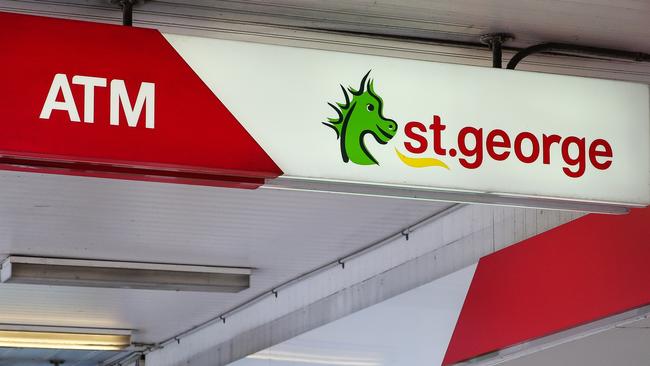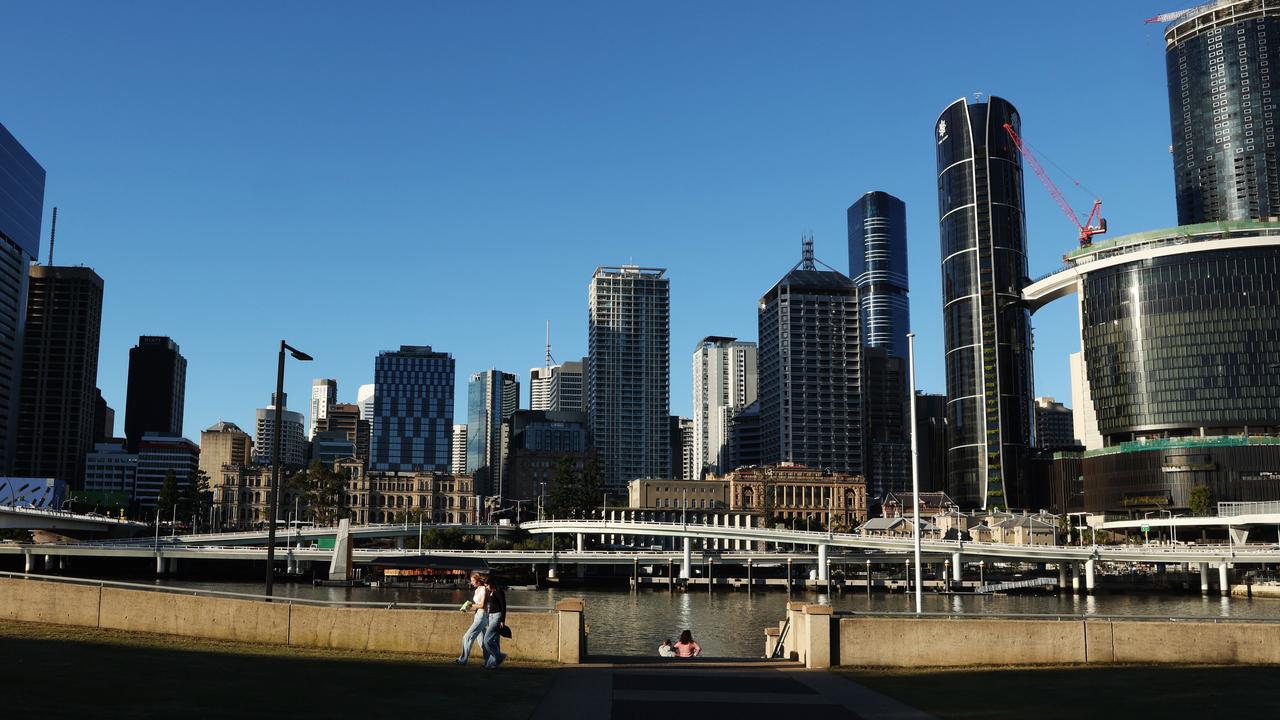Peter King finally confronts Westpac’s tech demons
A huge effort is needed to untangle the tech mess that has been slowing the bank down and making it hard to manage. It won’t be easy.

Business
Don't miss out on the headlines from Business. Followed categories will be added to My News.
With the painful rebuild of the Austrac explosion now receding, Westpac chief executive Peter King will turn to another of the bank’s demons: technology.
In doing so, King intends to spend billions of dollars to untangle the bank’s six separate networks. This work should have been done more than a decade ago just when the St George Bank merger was being bedded down.
There’s good reason why banks and other complex institutions are loath to take on tech. Any projects that tinker with the core come with substantial risk. But Westpac’s inability to tackle tech so far has been a standout.

Inevitably, projects are riddled with cost blowouts, delays, and execution rarely – if ever – goes to plan. Shareholders have little patience when problems invariably arise and targets are missed. Projects can cut short executive careers, so there is little wonder tech is avoided.
In recent years, ASX’s high-stakes project to rebuild its decades-old clearing platform eventually collapsed and regulators came down hard. Rival ANZ too has seen long delays in the full rollout of the ANZx cloud-based rebuild. However, ANZ has been doing its upmost to under-promise about the potential along the way.
Westpac’s King acknowledges tech programs can often be “big and challenging”.
“The trick with replacing your systems is making sure that you both get your customer experience right, which is the most important thing, but also meet your regulatory requirements,” he says.

While the costs in getting it wrong are significant, technology can be all the difference between the uninspiring middle of the pack player and a global outperformer.
From St George to BT, RAMS and Lloyds business banking, Westpac has been a big acquirer over the years with each deal coming with its own tech. Even St George was a product of several mergers and was still working through this when Westpac paid top dollar just as the global financial crisis hit.
Lots had been promised under Gail Kelly in 2010 when the former chief executive launched a program of SIPs (Strategic Investment Priorities) promising a clean-up of Westpac’s then sagging tech.
At the time she pledged $2bn over five years, but much of the projects were in customer-facing systems, from deposits to credit cards and building an online platform rather than tackling the back-end infrastructure. Those involved say some of the projects had the impact of adding to the existing technology stacks rather then replacing them.
‘Two platforms’
In the aftermath of the Austrac money laundering scandal, regulators also took aim at Westpac’s technology as partly to blame, accusing the bank of years of underinvestment. Even 15 years after the merger, St George and Westpac’s retail brands are running on separate platforms. Westpac is on Hogan and St George uses Celeriti. This is just one example why the bank is running at a higher relative cost base than rival Commonwealth Bank.
Despite the tech woes, Westpac’s front end still runs smoothly with a top-rated mobile banking app that offers everything from full digital mortgages to carbon footprint tracker. However, sitting behind it there’s a spaghetti junction of the heavy tech keeping Westpac together.

King tells The Australian the complexity means the bank can be hard to manage.
“Our technology isn’t older or less capable than others, we just have too much of it,” he says. “We see this as a must-do to get on and do it.”
Tech is critical in speeding up processes, reduces costs and importantly wins over new customers. The likes of Macquarie have been leading the way in recent years, spending big on tech and in the process being able to cherrypick 1.3 million of the nation’s very best customers.
CBA has rewritten the rules about incumbency by building its entire business around tech, allowing the lender to attract a share premium over rivals. It didn’t come without pain: former boss David Murray, who drove the spending, never saw the end of the project that was eventually switched on by his successor.
‘Unplugged’
Westpac was left reeling from its Austrac money laundering scandal in late 2019 and since then the bank has been spending the bulk of its $2bn annual capex bill building out risk management and tackling new and legacy regulatory issues.
As this process nears an end, King has availability to spend on “growth and productivity” measures again. King flagged that investment spending will remain around the $2bn mark annually (including on risk and regulation) and that compares with an averaged annualised level of $1.3bn pre-Austrac.
As part of this King wants to slash Westpac’s 180 tech platforms, processes and infrastructure – known as the technology stack – by two thirds. Data centres will be consolidated and different networks unplugged.

It also includes cutting the number of legacy platforms used to service customers, from around 10 currently to five. The biggest inroads will be made in payments and data, which should fall from 60 to 20 systems.
The real world benefits of this are lower costs, improved speed and better response for customers. It also promises to going some way in minimising risk, be it governance or cyber.
The tech project also comes as new tech like artificial intelligence is rapidly being rolled out for corporate applications, and this means Westpac can start to incorporate this at the ground floor.
A new stand-alone unit has been created to work through every corner of the bank, and work done on technology so far means 500,000 customer interactions have been automated. There’s been a reduction in costly data centres and 200 applications so far being decommissioned.
King has been careful to say the tech will be tackled one project at a time, rather than delivering it all at once. Also, he has kept his targets broad, saying the tech project will improve speed-to-market, lower costs and reduce operational risk.
“This is a big agenda for the company over the next four years,” he says.
King was speaking as Westpac posted a $7.2bn net profit for the year ended September. This was up 26 per cent on the year. The bank is yet to see a wave of bad debts with the economy holding resilient. The bank also outlined a dividend boost and surprise $1.5bn share buyback. Westpac still has another $1bn of surplus capital coming down the line when APRA eventually gives it the clean bill of governance health following the Austrac action.
Super size bid
Brookfield’s $20bn friendly bid for Origin Energy looks increasingly shaky, with the nation’s biggest super fund AusSuper showing it’s prepared to throw its massive balance sheet for a spoiling tactic.
AusSuper’s chief investment officer Mark Delaney has spent more than $200m since last Thursday to passes the critical 15 per cent holding in Origin. The spending shows a determination around his strategy, and that is to keep the energy major out of the hands of Canada’s Brookfield.

The stake has increased from its previous position of 12.7 per cent, although AusSuper can’t move past 20 per cent under the takeovers threshold rules.
Even so, Brookfield’s worst fear is that AusSuper’s substantial position could lead to contagion, with other super funds sitting on longer-term mandates also prepared to hold out. This means there is now a real risk Brookfield could fall short of the 25 per cent needed to approve the buyout deal. Other industry funds with exposure to Origin tell The Australian they are considering their options in light of AusSuper’s stand, although the smaller funds for now are prepared to stay passive and take advantage of pricing tension to maximise returns.
AusSuper regards Origin as an ultra-long term investment ideally positioned for the coming boom in green energy-spending that is needed in Australia.
Origin’s Independent Expert, Grant Samuel, late Monday said it stood by its recommendation the sweetened $9.53 a share on offer from Brookfield was in the best interests of Origin shareholders.
Fund managers say AusSuper is putting a new framework around the value of the energy transition and Origin’s management team.
“The beauty of Origin is that in the Australian market there is that scarcity of value that it has. It’s very hard to price, but there is a value to it,” says Charles Hamieh, a portfolio manager with the $165bn infrastructure-focused ClearBridge Investments.
Brookfield’s head of transition investing and former Bank of England governor Mark Carney is scheduled to speak at a banking conference in Hong Kong on Tuesday on the future direction of ESG investments.
johnstone@theaustralian.com.au
More Coverage
Originally published as Peter King finally confronts Westpac’s tech demons





